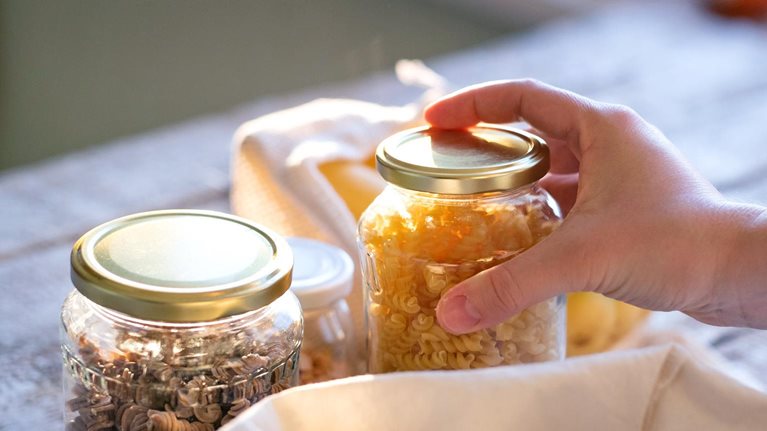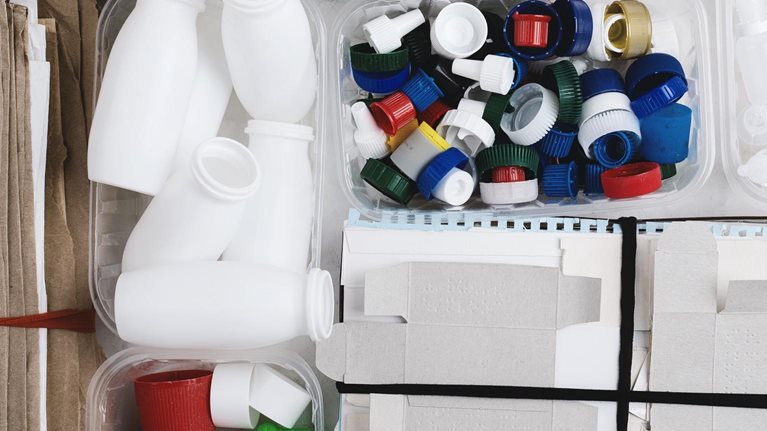How are attitudes to sustainable packaging evolving as consumers emerge from COVID-19 to face a new set of uncertainties in their daily lives? To find out, we launched a global survey and conducted interviews with an extensive range of executives from across the packaging value chain.
Among US consumers, five key findings emerge:
- Price, quality, and convenience are still consumers’ top buying criteria for products, while environmental impact continues to be one of the lowest-ranked factors (however, this is not true for all consumer groups).
- While respondents named hygiene, food safety, and shelf life as the most important characteristics for product packaging when making a purchase, 43 percent of consumers still say environmental impact is an extremely or very important packaging characteristic when making purchasing decisions. That said, the overall relative importance of environmental factors for consumers has decreased somewhat.
- Among concerned consumers, the impact of ocean litter has become the primary environmental issue across all generations, regions, and neighborhoods; all other concerns have decreased in importance since 2020.
- Most consumers do not have a strong understanding of which packaging types are more sustainable but seem to favor compostable and plant-based packaging.
- Most consumers are willing to pay more for sustainable packaging. In fact, in each end-use category surveyed, 4 to 7 percent of consumers are willing to pay a premium well above 10 percent.
The key takeaway from our work is that winning in sustainable packaging in the US market will require a granular approach. Done right, products with clear environmental credentials are clearly outgrowing their peers. However, there is no universal solution.
The next normal of sustainable packaging
During the peak of the COVID-19 pandemic in 2020, we conducted a global survey across ten countries to research consumers’ views on sustainable packaging.1 Since then, significant further disruptions have occurred, such as economic uncertainty—including the highest inflation in decades—the war in Ukraine, an energy crisis, and volatility in financial markets.2 Surveys have shown that consumers are worried and jittery as these pressures sap their confidence.3 With such challenging new realities in their daily lives, how have consumers’ attitudes toward sustainable packaging changed? To answer this question, we launched a comprehensive survey in the first quarter of 2023 across 11 countries around the world to explore consumer sentiments toward sustainable packaging. This was complemented by interviews with executives at retailers, fast-moving-consumer-goods companies, and packaging organizations in major end-user markets and across the main packaging substrates. We will share the insights that have emerged from this work in a variety of publications over the coming months, starting with this article on US consumers.
In the mind of the US consumer
The US consumer survey resulted in five main findings:
1. In general, consumers are less concerned about the environmental impact of products than about other factors, but this is highly dependent on geodemographics
As in our 2020 survey, when we asked consumers about the most important factors influencing their purchasing behavior of the products they buy, they ranked environmental aspects among their lowest priorities.4 Instead, price, quality, and convenience are the most important buying criteria for US consumers when purchasing a product (Exhibit 1). This is not surprising given that more than two-thirds of consumers say inflation is their top concern, especially with regard to high prices for necessities such as food.5 Interestingly, however, the importance of environmental considerations as a key buying factor varies depending on age group and locality. In fact, 37 and 39 percent of Gen Z and millennial consumers, respectively, and 40 percent of those living in urban neighborhoods cited environmental impact as an extremely or very important factor when making their purchasing decisions. By contrast, only 18 percent of baby boomers and 21 percent of consumers living in rural areas stated the same.

2. In packaging, US consumers are most concerned about hygiene, food safety, and shelf life
Looking more deeply into what US consumers expect from product packaging, hygiene and food safety as well as shelf life emerged as the top characteristics; 75 percent of respondents said hygiene and food safety are extremely or very important, while 70 percent said the same about shelf life (Exhibit 2). Shelf life is the only factor that has increased in importance since our 2020 survey—most likely linked to the uncertainties facing consumers. Recent surveys have shown that consumers expect to increase their spending on necessities while tightening their belts when it comes to nonessentials.6 Indeed, ensuring a product has a long shelf life helps minimize waste and reduce costs.

At the same time, the appearance of a product’s packaging has seen the largest drop in importance (17 percentage points), and only about one-third of consumers said this was an extremely or very important purchasing factor. One key driver here is likely the growth of online shopping, making the appearance of a product’s packaging a less important part of the purchasing decision.7
In terms of sustainability, 39 percent of consumers indicated that the environmental impact of packaging is extremely or very important to their purchasing decisions. However, as with other factors, this too has declined in importance since 2020 (by four percentage points).
3. For environmentally concerned consumers, ocean litter emerges as the key issue
Our 2020 survey found that environmental concerns related to packaging were spread almost equally across several factors, with consumers ranking marine litter at a similar level as other issues such as deforestation and natural-resource depletion.8
In 2023, a different picture has emerged. Today, US consumers across generations, regions, and neighborhoods clearly rank the environmental impact of ocean litter as their most important concern. This factor has gained significant importance since 2020, while other factors relating to the environmental impact of packaging (such as climate change and deforestation) have dropped in importance among survey respondents. For example, climate change has seen a decline in importance of 11 percentage points since 2020.
Among conservation activities, our survey showed that recycling is extremely common across groups, while home composting is most popular among Gen Zers. However, two-thirds of consumers have little to no confidence that they know which product packaging is recyclable, while 17 percent find it difficult or very difficult to know if something is recyclable. This highlights a long-standing gap in consumer knowledge and education on sustainability more broadly, including recycling, compostable products, and so on.
Moreover, about 70 percent of consumers say they have limited or no understanding of their local sustainability regulations. Meanwhile, one-third of consumers feel there should be more regulations related to packaging sustainability and view brand owners as the most responsible for propelling packaging sustainability.
4. US consumers lack clarity on the most sustainable packaging materials
Most US consumers do not have a strong understanding of which packaging types are most sustainable (Exhibit 3). While consumers see compostable and plant-based products as providing the most sustainable packaging (72 percent and 70 percent, respectively), there are several other packaging types that at least half of consumers rank as extremely or very sustainable. As in 2020, consumers rank packaging that combines plastic, paper, and aluminum foil among the least sustainable options; nevertheless, 29 percent of consumers consider this type of packaging to be extremely or very sustainable.

Roughly two-thirds of consumers say sustainable packaging is at least somewhat important when making a purchase. For consumers, packaging type is a strong indicator of product sustainability, but product ingredients are ranked as the top factor when determining whether a product is sustainable.
5. About half of consumers claim to be willing to pay more for sustainable packaging, although most are willing to pay only a small premium
In all categories surveyed except one (clothing), more than half of respondents at least sometimes purchase products based on the sustainability of the packaging. The highest-ranked categories are within fresh fruit, vegetables, and produce, as well as beverages. About half of US consumers are willing to pay more for sustainable packaging: across different end-use areas, about 50 percent of consumers are willing to pay 1 to 3 percent more, 25 percent are willing to pay 4 to 7 percent more, and about 12 percent are willing to pay 7 to 10 percent more. In each category, 4 to 7 percent of surveyed consumers said they are willing to pay a significantly higher premium than 10 percent. Conversely, 5 to 8 percent of consumers surveyed across different categories said they were not willing to pay any price premium.
Winning in sustainable packaging
It is encouraging to see that in each food and nonfood category surveyed there is a subset of consumers highly concerned about sustainability with a considerable willingness to pay a premium for green packaging. Since our survey in 2020, consumers seem to have developed a clearer view of which environmental issues are of the highest concern.
Nevertheless, our survey results clearly show there is there is not a universal solution for packaging players—consumers today have diverse views on packaging sustainability. For example, in some of our segments, consumers rank fiber packaging as the most sustainable, and in others, they rank compostable plastic film as the most sustainable. Hence, a truly granular understanding of end-user segments will be critical to win the sustainable-packaging race. Packaging players need to not only understand how consumers buy and use products, as well as how the packaging is disposed of, but also consider how to improve the pain points (for example, the hassle of recycling by cleaning packaging and bringing it back to the store). Such insights will be the starting point to offering sustainable packaging with a high fit for different end uses. Our recommendation is to apply an incremental approach, and don’t wait to have the perfect solution in place from the start.
Winning in sustainable packaging amid current market uncertainties will require a granular approach. There is no single solution to fit all cases, but if done right, sustainability has a clear growth upside. In fact, products making environmental, social, and governance claims averaged 28 percent cumulative growth over the five-year period, versus 20 percent for products that made no such claims.9


